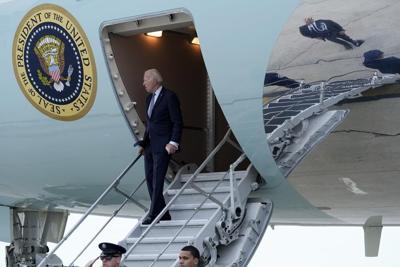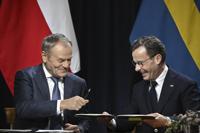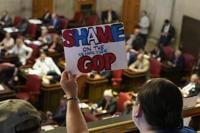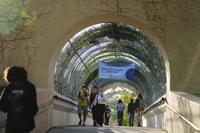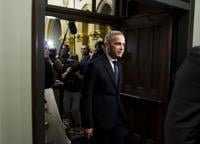UNITED NATIONS (AP) — The commitments were far-reaching and ambitious. Among them: End extreme poverty and hunger. Ensure every child on Earth gets a quality secondary education. Achieve gender equality. Make significant inroads in tackling climate change. Create “universal access to affordable, reliable, sustainable and modern energy for all.” And achieve all of this by 2030.
Halfway to that goal, — and in some cases
At a two-day summit that began Monday, U.N. Secretary-General Antonio Guterres tried to kick-start action to achieve the 17 goals adopted by world leaders in 2015, which developing countries in particular consider crucial to closing the widening inequality gap between the world’s rich and poor countries.
He told leaders in the crowded General Assembly hall they made “a promise to build a world of health, progress and opportunity for all — a promise to leave no one behind, and a promise to pay for it.”
General Assembly President Dennis Francis told the assembled leaders that the fact that “we are lagging in our promise cannot be the death knell for our blueprint” to “banish poverty from our societies, protect and preserve our planet, and to ensure prosperity for all.” Instead, he said, “bold and transformative action must be prioritized.”
Leaders from the 193 U.N. member nations then adopted a 10-page political declaration by consensus. It recognizes that the goals are “in peril” and expresses alarm that progress is either moving too slowly or regressing to pre-2015 levels. It reaffirms more than a dozen times, in different ways, leaders’ commitment to achieve the SDGs, or sustainable development goals, reiterating their individual importance.
How can this be done in the next seven years?
A DECLARATION SHORT ON SPECIFICS
The leaders have committed to accelerating action. But the declaration they’re working with is short on specifics.
At Saturday’s start of an “SDG Action Weekend,” Guterres reviewed for activists the grim findings in a U.N. report in July. On Monday, he did it again, saying that only 15% of some 140 specific targets to achieve the 17 goals are on track. Many are going in the wrong direction.
At the current rate, the report said, 575 million people will still be living in extreme poverty and 84 million children won’t even be going to elementary school in 2030 – and it will take 286 years to reach equality between men and women.
“The SDGs need a global rescue plan,” the U.N. chief said. He called the summit “the moment for governments to come to the table with concrete plans and proposals to accelerate progress.”
It isn’t just governments that need to step up, Guterres said. He urged activists as well as the business community, scientists, academics, innovators, women and young people to join in working to achieve the goals.
U.S. First Lady Jill Biden echoed the secretary-general at a reception Sunday evening organized by the U.N. children’s agency, UNICEF, for global champions of education. she said progress on achieving the SDGs “looks steep.” But she said the United States “will continue to be a partner will you every step of the way.”
As an she urged every country’s leader to invest in children, saying they will “help us build a more peaceful, stable world.”
A PLAN TO CLEAR OBSTACLES FROM THE PATH
Guterres said the most important initiative to rescue the overall plan is the proposal of an “SDG stimulus,” which aims to offset challenging market conditions faced by developing countries.
It calls for immediate action in three areas:
—tackling the high cost of debt and rising risks of debt distress;
—massively scaling up affordable long-term financing for development, especially by public and multilateral banks;
—expanding contingency financing to countries in need.
Guterres told Monday’s opening session he was “deeply encouraged” by the political declaration, “especially its commitment to improving developing countries’ access to the fuel required for SDG progress: finance.”
The U.N. chief said it also includes a call to reform the and to change the business model so multilateral; development banks, like the World Bank, “can massively leverage private finance at affordable rates to benefit developing countries.”
A February U.N. report on the SDG Stimulus said debt is battering the economies of many developing countries. It said that as of last November, 37 of the world’s 69 poorest countries were either at high risk or already in debt distress, while one in four middle-income countries, which contain the majority of the extreme poor, were at “high risk of fiscal crisis.”
There are narrow rays of hope. Guterres said he was encouraged that at the recent meeting of the G20, the world’s 20 leading economies welcomed the SDG Stimulus. And he said he’s hopeful that the political declaration to be adopted by leaders on Monday will lead to major action.
The declaration says leaders will push forward the stimulus plan “to tackle the high cost of debt and rising risks of debt distress, to enhance support to developing countries and to massively scale up affordable long-term financing for development and expand contingency financing to countries in need.”
Whether those administrative promises and the momentum of a big week at the United Nations will translate into actual progress, though, remains — as before — deeply uncertain.
___
Edith M. Lederer, chief U.N. correspondent for The Associated Press, has been covering international affairs for more than 50 years.

